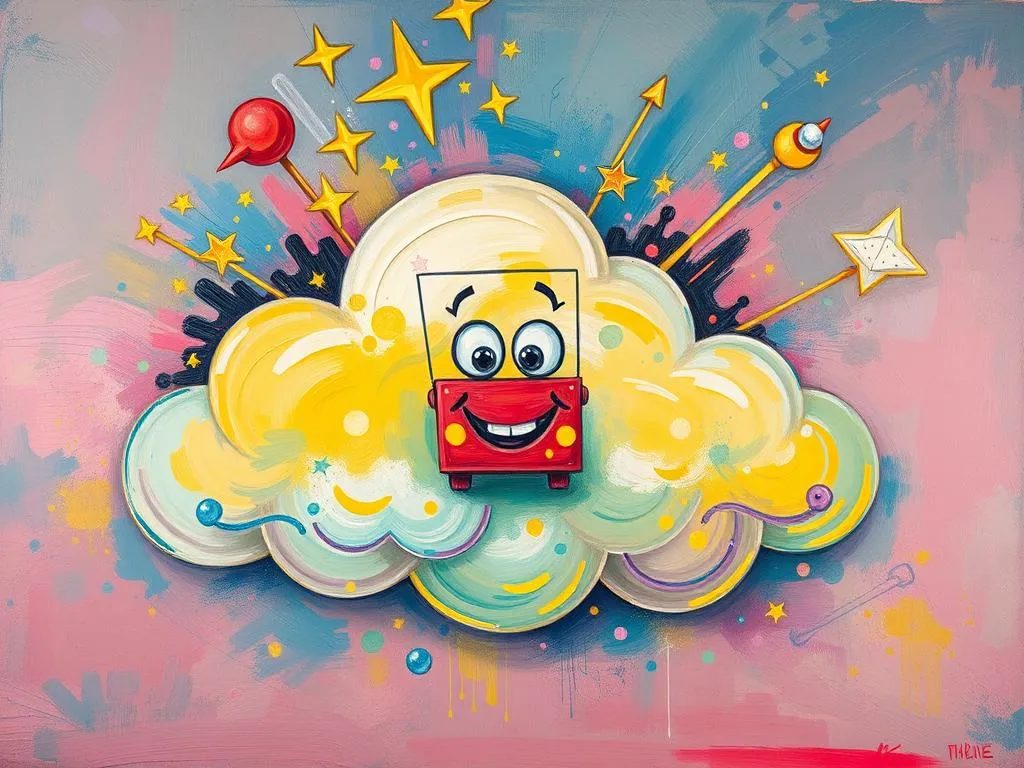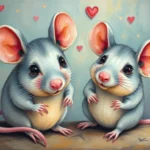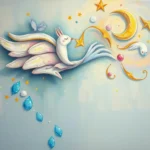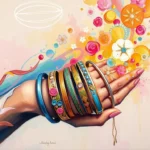
Have you ever woken up in a cold sweat, heart racing, bewildered by a dream that felt all too real? Perhaps you’ve found yourself navigating through a labyrinth of symbols that seemed to shift and change right before your eyes. Our dreams often serve as a rich tapestry of our thoughts, emotions, and experiences, yet sometimes we find ourselves grappling with symbol hijacking—those moments when the meaning of a dream feels distorted or ensnared by our waking life.
In this exploration, we’ll delve into the intricacies of dream symbolism, sharing insights from various cultural perspectives and psychological frameworks. We’ll walk through relatable scenarios to help you identify and understand how these symbols manifest in your dreams. Finally, we’ll look at ways you can leverage these insights for personal growth. So, grab a cup of tea, settle in, and let’s unravel the mysteries of your subconscious together.
The Great Symbol Switcheroo: Understanding Symbol Hijacking
Dreams often act as windows into our subconscious, filled with archetypal symbols that can reflect our deepest fears, desires, and unresolved conflicts. However, there are times when these symbols feel like they’ve been hijacked—like they’ve taken on meanings that clash with our true feelings. This phenomenon can occur for several reasons:
-
Cultural Context: Symbols can vary significantly across cultures. For instance, a snake may symbolize danger in one context but represent transformation and healing in another. When we dream, our cultural backgrounds can influence how we interpret these symbols, leading to potential misunderstandings.
-
Personal Associations: Each individual has their own personal history that shapes how they perceive certain symbols. For example, if you had a traumatic experience with a dog, dreaming of a friendly dog may evoke feelings of anxiety rather than comfort, effectively hijacking the symbol’s intended meaning.
-
Emotional State: Our emotional well-being can heavily influence the symbolism in our dreams. When we’re feeling overwhelmed or stressed, symbols that typically convey safety or joy can morph into sources of discomfort or fear.
-
Collective Unconscious: According to Carl Jung, we share a collective unconscious filled with universal symbols. However, personal experiences can distort these symbols, leading to a disconnect between the intended meaning and personal interpretation.
Understanding the nuances of symbol hijacking can be the first step toward reclaiming the true essence of your dreams, allowing you to engage with your subconscious more authentically.
Dreamscapes Unmasked: Scenarios of Symbol Hijacking
Imagine you’re exploring the realm of your dreams, only to find familiar symbols taking on unexpected forms. Here are a few scenarios that may resonate with your own experiences, illustrating how symbol hijacking can occur:
1. The Broken Mirror
You dream of standing in front of a broken mirror, your reflection fractured into countless pieces. Traditionally, mirrors symbolize self-reflection and truth. However, in this dream, the broken mirror may represent internal conflict or low self-esteem. If you’ve recently faced criticism or a setback, the mirror’s shattering can symbolize your feelings of fragmentation and insecurity, hijacking its original meaning of clarity and insight.
2. The Empty Stage
In another dream, you find yourself on an empty stage, spotlight shining down on you. While a stage may symbolize self-expression or the desire to be seen, the emptiness of the venue might indicate feelings of isolation or fear of judgment. If you’ve been feeling overlooked or unappreciated at work or in social situations, the stage may become a source of anxiety rather than a platform for creativity, highlighting the hijacking of a once-empowering symbol.
3. The Chaotic Classroom
Picture yourself in a classroom, but instead of a typical learning environment, it’s chaotic—students are shouting, desks are overturned. Classrooms often symbolize learning and growth, yet in this scenario, the chaos can represent a lack of control in your life. If you’re juggling multiple responsibilities and feeling overwhelmed, this dream may hijack the classroom’s intended meaning, reflecting your struggle to find balance and clarity amidst the chaos.
4. The Inescapable Maze
You find yourself wandering through an endless maze, walls shifting as you try to find the exit. While mazes can symbolize the journey of self-discovery, in this dream, they may represent feelings of confusion or being trapped in your waking life. If you’re facing a tough decision or feeling lost in your career, the maze becomes a haunting reminder of your uncertainty, hijacking its original connotation of exploration and adventure.
5. The Drowning River
In your dream, you’re swept away by a rushing river, struggling to stay afloat. Water often symbolizes emotions and the subconscious, but in this case, the river becomes a vehicle of fear and panic. If you’re currently experiencing intense emotional turmoil or feeling overwhelmed by life’s pressures, the river may hijack its typical meaning, transforming it into a representation of feeling overpowered rather than embracing the flow of emotions.
These scenarios offer a glimpse into how familiar symbols can be transformed by our current life situations and emotional states. Recognizing these shifts enables you to reclaim your narrative and foster a deeper understanding of your subconscious.
Reclaiming Your Narrative: Transformative Insights for Personal Growth
Now that we’ve explored the nuances of symbol hijacking and shared relatable scenarios, let’s turn our focus toward personal growth. How do we reclaim the meanings of our dreams and use them as tools for self-discovery and empowerment? Here are some practical insights to guide you on this journey:
1. Keep a Dream Journal
Documenting your dreams can be an invaluable practice. It not only helps you remember your dreams but also allows you to identify recurring symbols and themes. Over time, patterns may emerge, revealing insights into your subconscious. By reflecting on these symbols, you can begin to decipher their meanings and understand how they relate to your waking life.
2. Explore Cultural Contexts
When you encounter a symbol in your dreams that feels hijacked, consider researching its cultural significance. Different cultures assign various meanings to symbols, and understanding these perspectives can help you broaden your interpretation. This exploration may unveil layers of meaning you hadn’t previously considered, enriching your understanding of your dream narrative.
3. Reflect on Personal Associations
Take time to reflect on your personal experiences and associations with specific symbols. Create a list of symbols that frequently appear in your dreams and jot down any personal memories or feelings tied to them. This process can illuminate why certain symbols may feel distorted or hijacked, allowing you to reframe their meanings in a way that resonates with your truth.
4. Engage in Active Imagination
Inspired by Jungian psychology, engaging in active imagination can be a transformative tool for exploring dream symbols. Take a symbol from your dreams and visualize it in a safe space. Allow it to interact with you; ask it questions and listen to its responses. This dialogue can help you uncover hidden meanings and reclaim the power of the symbol in your waking life.
5. Integrate Lessons into Daily Life
As you uncover the meanings behind your dreams, consider how you can integrate these lessons into your daily life. If a symbol represents a fear you need to confront, take small steps to address it. If it signifies a desire for creativity, carve out time in your schedule to engage in artistic pursuits. By actively incorporating these insights into your life, you empower yourself to transform the narratives that arise from your dreams.
As you navigate the landscape of your dreams, remember that your subconscious is your ally. Each symbol, no matter how distorted or hijacked it may feel, holds the key to understanding your inner world. Embrace the journey of self-discovery, and allow your dreams to guide you toward clarity and growth.
Reflecting on your dream experiences can be a powerful reminder that life is a tapestry woven with both light and shadow. As you delve deeper into your subconscious, consider this: What truths might your dreams reveal about the essence of your being? By reclaiming the narratives within your dreams, you not only unlock the wisdom hidden beneath the surface but also empower yourself to embrace your authentic self.







